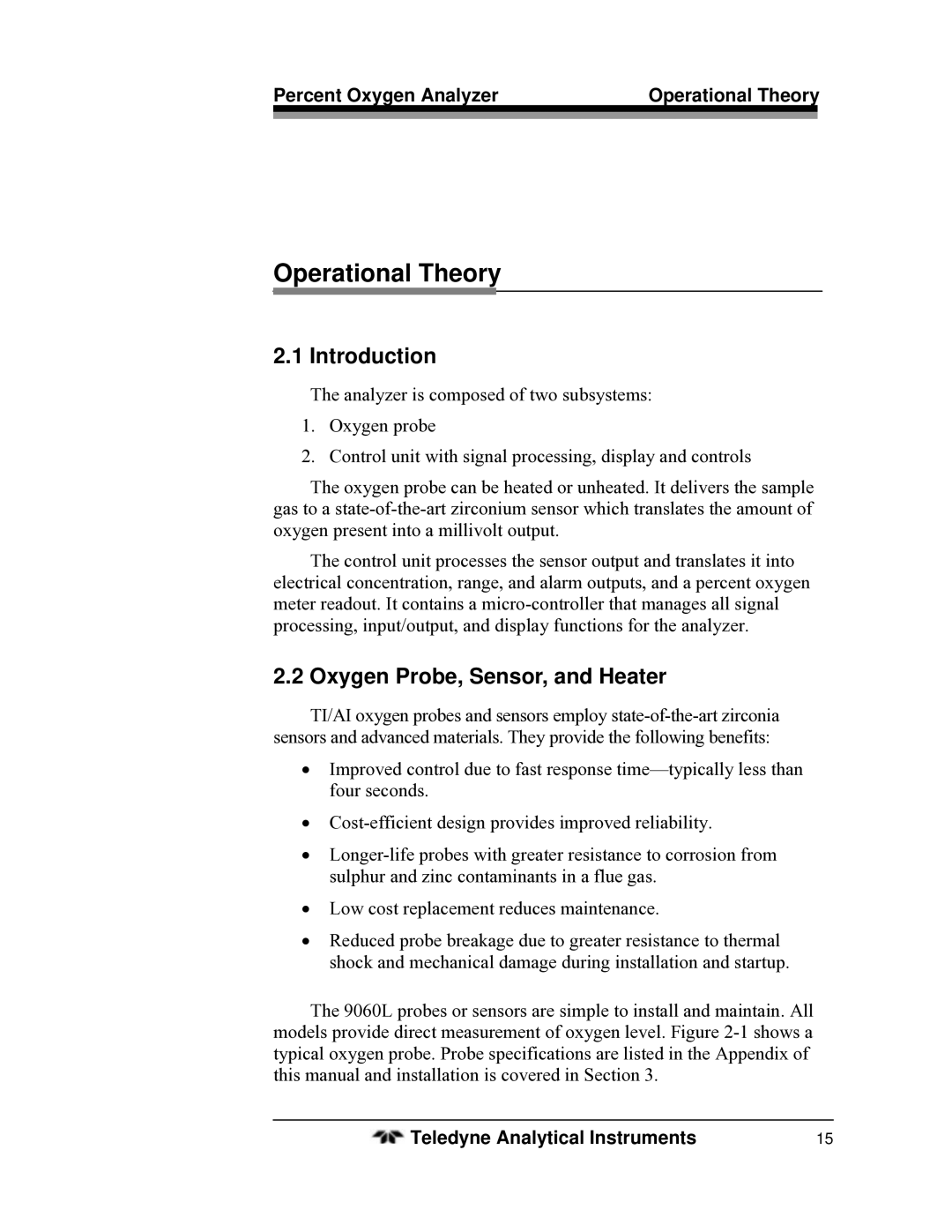
Percent Oxygen Analyzer | Operational Theory | |
|
|
|
Operational Theory
2.1 Introduction
The analyzer is composed of two subsystems:
1.Oxygen probe
2.Control unit with signal processing, display and controls
The oxygen probe can be heated or unheated. It delivers the sample gas to a
The control unit processes the sensor output and translates it into electrical concentration, range, and alarm outputs, and a percent oxygen meter readout. It contains a
2.2 Oxygen Probe, Sensor, and Heater
TI/AI oxygen probes and sensors employ
•Improved control due to fast response
•
•
•Low cost replacement reduces maintenance.
•Reduced probe breakage due to greater resistance to thermal shock and mechanical damage during installation and startup.
The 9060L probes or sensors are simple to install and maintain. All models provide direct measurement of oxygen level. Figure
Teledyne Analytical Instruments | 15 |
